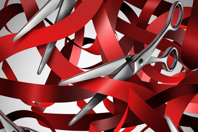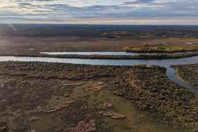SOURCE WATER RESOURCES
-
As water systems become more circular and complex, understanding and managing the subsurface — the hidden half of the water cycle — is becoming a critical enabler of resilience. This article explores the key trends shaping this new reality, from tackling “forever chemicals” to the water strategies redefining heavy industry.
-
Across the globe, water systems face an invisible crisis that drains billions of dollars every year. In the U.S. alone, aging infrastructure causes water losses costing utilities an estimated $6.4 billion annually. But a breakthrough in satellite-based leak detection is changing the game, delivering unprecedented savings and operational efficiency.
-
The White House has finalized plans to roll back rules under the National Environmental Policy Act (NEPA), narrowing its focus and limiting what the current administration claims are needless delays for federal approval of water, energy, and other infrastructure plans. For water and wastewater utilities, the changes could speed up permitting for critical projects, although experts warn the tradeoffs could do more harm than good.
-
Bathymetric modeling maps underwater terrain. It also helps guide planning, prevent hazards, and build climate-resilient infrastructure.
-
The data center industry stands at a critical juncture. As facilities scale to meet exponential computing demands, water consumption has emerged as a defining operational challenge. Traditional approaches focused on water efficiency are no longer sufficient.
-
When pregnant women drink water that comes from wells downstream of sites contaminated with PFAS, known as “forever chemicals,” the risks to their babies’ health substantially increase, a new study found. These risks include the chance of low birth weight, preterm birth, and infant mortality.
-
Diverse wastewater flows from mixed-use projects strain conventional systems. Learn how advanced biological treatment stabilizes unpredictable loads, ensures compliance, and delivers high-quality water suitable for reuse.
-
Wastewater flows in seasonal resorts are highly volatile. Learn how to stabilize biological treatment against sudden peak demands and low-flow off-seasons, ensuring continuous compliance and securing a high-quality water source for reuse.
-
As water systems grow more complex and climate patterns shift, Legionella is emerging as one of the most persistent and underestimated risks in the built environment. The threat to public health from Legionnaires' disease will likely further escalate unless decisive action is taken.
-
Water scarcity poses unique challenges to KW Resort Utilities Corp. (KWRU), the utility firm that provides wastewater management, wastewater recovery, and wastewater treatment in the region. KWRU began operation in the late 1960s and has worked hard over the decades to keep up with wastewater needs as population and tourism have boomed, spurred by land reclamation and development.











